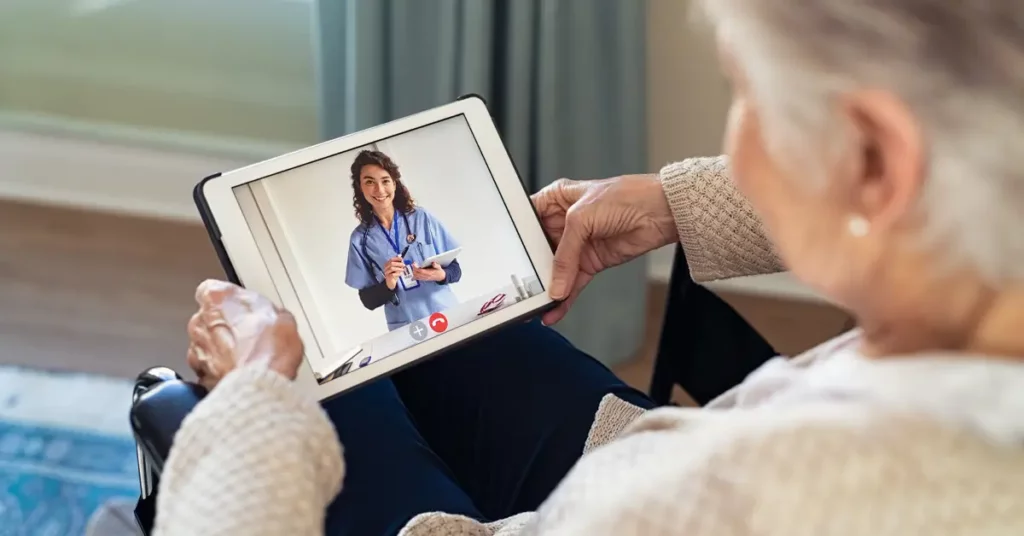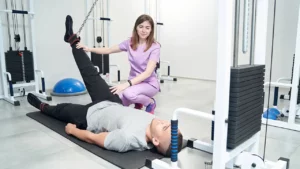Telehealth and remote patient monitoring (RPM) are technologies that have revolutionized the healthcare industry. These technologies allow patients to receive healthcare services from the comfort of their own homes through telecommunication technology and medical devices. Studies prove that this not only improves patient outcomes, but also reduces healthcare costs for both the patient and their provider, making healthcare more accessible and efficient for all.
In this article, we will explore the benefits of telehealth and RPM and how they are being used to improve patient monitoring and healthcare delivery.
Remote Patient Monitoring
Remote patient monitoring is a technology-based healthcare service that enables patients to receive medical monitoring and care from their homes or remote locations, instead of visiting a healthcare facility. The service is designed to improve patients’ health outcomes, increase access to healthcare, and reduce healthcare costs.
How Remote Patient Monitoring Works
- Monitoring devices: Patients use monitoring devices, such as blood pressure monitors, to collect and transmit health data to healthcare providers.
- Patient portal: Patients access a secure patient portal to manage and review their health information.
- Healthcare providers: Healthcare providers use the health data collected from the monitoring devices to monitor patients’ health status and provide medical advice and treatment as needed.
- Continuous monitoring: Remote patient monitoring provides continuous monitoring and regular feedback to patients, helping to improve their health outcomes and manage chronic conditions.
Telehealth and RPM Combined
Telehealth and RPM technology can be used to monitor a wide range of health conditions, including chronic conditions such as diabetes, heart disease, and lung disease. This can include monitoring vital signs such as blood pressure, heart rate, oxygen levels, and temperature, as well as monitoring symptoms, medications, and treatment plans. Telehealth and RPM technology can also be used to provide remote consultations and follow-up care, and to support patient self-management.
One of the main advantages of telehealth combined with RPM is that they allow patients to receive care from the comfort of their own homes, avoiding the need for in-person visits to a healthcare facility. This can be especially beneficial for patients with chronic conditions or mobility issues. Additionally, telehealth and RPM can improve patient outcomes by providing healthcare professionals with a more comprehensive view of a patient’s health, and by empowering patients to take a more active role in their own care.
Telehealth and RPM also have the potential to improve healthcare delivery by reducing healthcare costs, improving access to care, and reducing the burden on healthcare systems. Remote monitoring and tele-healthcare can be especially beneficial in rural areas where the population is sparse and remote, and access to healthcare is limited.
Monitoring Devices
Monitoring devices are an essential component of telehealth and RPM technology. These devices are used to collect and transmit patient health data to healthcare professionals. The types of devices used for remote patient monitoring vary depending on the condition being monitored and the patient’s needs.
Wearable devices, such as fitness trackers and smartwatches, are commonly used for monitoring vital signs such as heart rate, steps taken, and sleep patterns. These devices can also be used to monitor symptoms, such as pain or fatigue, and to support patient self-management.
Remote physiologic monitoring (RPM) devices are specialized devices that are used to monitor specific physiological parameters such as blood pressure, glucose levels, oxygen levels, and electrocardiogram (ECG). These devices are often used to monitor patients with chronic conditions, such as heart disease or diabetes, and can be used in the patient’s home or worn on the patient’s body.
Mobile health apps are also becoming increasingly popular for RPM. These apps can be used to track symptoms, medications, and treatment plans, and can also be used to provide remote consultations and follow-up care. Some apps also allow patients to share their health data with their healthcare providers, which can improve communication and collaboration.
Population Health
Population health is a field of healthcare that aims to improve the health outcomes of specific populations by addressing the underlying social, economic, and environmental factors that contribute to poor health. Telehealth and RPM technology can play a key role in population health by providing healthcare professionals with a more comprehensive view of a patient’s health and by empowering patients to take a more active role in their own care.
One of the main advantages of telehealth and RPM for population health is that they can improve access to care for patients in remote or underserved areas. This can be especially beneficial for patients with chronic conditions or mobility issues, as well as for patients in rural areas where the population is sparse and remote, and access to healthcare is limited.
Telehealth and RPM can also be used to identify and track health trends within a specific population. This can help healthcare professionals to identify and address health disparities, and to develop targeted interventions to improve the health outcomes of specific populations.
Additionally, telehealth and RPM can be used to support the care of patient populations with specific needs, such as the elderly or patients with chronic conditions. This can include providing remote consultations and follow-up care, and to support patient self-management.
The Revolutionary Remote Patient Monitoring Technology Solution of DrKumo
Remote patient monitoring is a crucial aspect of telehealth and DrKumo is a leader in this field. The company provides highly scalable and continuous real-time remote patient monitoring solutions that cater to a variety of health conditions such as chronic disease management, acute care, post-operation, and hospital care at home.
DrKumo remote patient monitoring (RPM) technology offers a user-friendly solution that is powered by a state-of-the-art, HIPAA-compliant, mobile-enabled, continuous real-time monitoring, and AI/ML engine. The technology enables patients to manage their health conditions from the comfort of their homes, and healthcare providers can access real-time intelligence for timely interventions.
DrKumo is revolutionizing the way people access quality healthcare globally. The company has an innovative, collaborative, and technology-driven culture that provides effective solutions to both patients and healthcare providers. With its advanced remote patient monitoring technology, DrKumo is making healthcare accessible, affordable, and convenient for everyone.
Takeaways
Telehealth and remote patient monitoring (RPM) have become a valuable solution for remote patient monitoring. The use of telehealth technology has grown significantly due to the COVID-19 pandemic and has allowed for the collection of health data that can be used to inform patient care. The benefits of telehealth include improved patient outcomes and satisfaction, reduced hospital readmissions, and improved management of chronic diseases. On the other hand, remote patient management has allowed for a more efficient and effective delivery of health care services, and has been supported by health care professionals, including the Department of Health and Human Services.
Are you a healthcare provider looking to improve patient outcomes and satisfaction while reducing costs? Contact DrKumo now!











